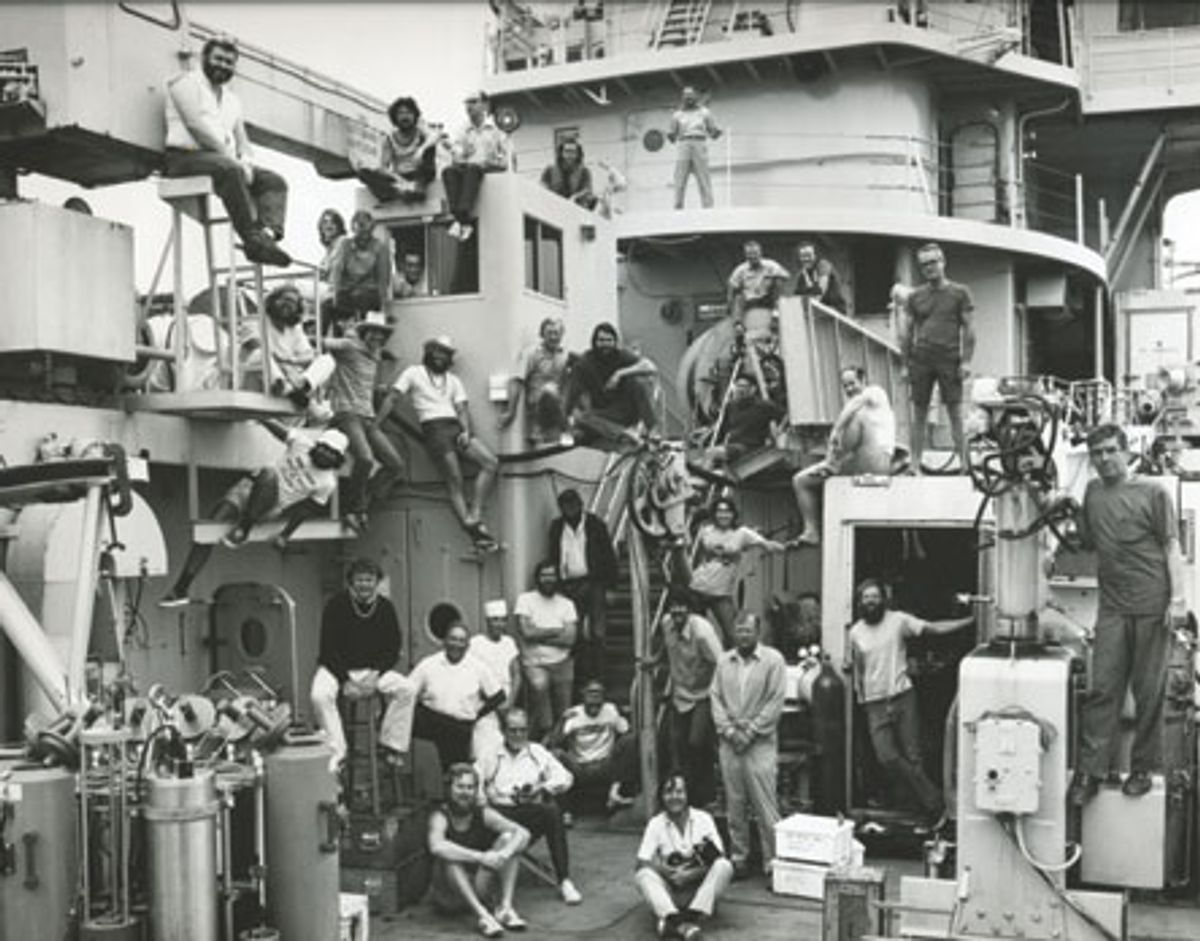Though Broecker is indeed known as a cantankerous and demanding man who can be dangerous to cross, his audience was in a forgiving mood Friday afternoon, having gathered for several hours of talks and songs honoring "Wally Broecker's 50 Years of Innovation." And rightly so.
Were there a Nobel Prize in geoscience, Broecker would have at least one. He in fact has every other relevant award: the Franklin Institute's Franklin Medal, USC's Tyler Prize for Environmental Achievement, the U.S. president's National Medal of Science, AGU's Roger Revelle Medal (named for the scientist who first started directly measuring carbon concentrations in earth's atmosphere), the National Academy's Alexander Agassiz Medal (named for the scientist who discovered the ice ages), and the European Association for Geochemistry's Urey Medal (name for the isotope dating pioneer). Broecker's most influential single paper has been cited in scholarly publications more than 25,000 times.
Broecker started his career as a geochemist specializing in carbon dating. His major achievements, as summarized in talks by George H. Denton of the University of Maine and Michael L. Bender of Princeton University, have included the following:
--his leadership in charting the chemical composition and age of ocean waters at all depths, worldwide
--his discovery of what he dubbed The Great Ocean Conveyor, a giant current that loops across the South Pacific and South Atlantic and then heads north to what Denton called its "weak spot" near Greenland, where warm surface waters cool and drop, to return saltier to the southern hemisphere
--his discovery and analysis with Ewing and Heezen of a sudden cold snap 11,000 years ago, an event he later called "the big chill"
--his postulation, based on study of glacial moraines in both the northern and southern hemispheres, of a bipolar climatic seesaw, such that when the North is colder the South is warmer, and vice versa
Broecker was a leader in Geosecs (see photo), a large-scale global program to measure just about everything in the oceans that could be identified. In 1975, a time when there was much concern about global cooling, Broecker predicted that a combination of natural climatic variability and human-generated greenhouse gases would soon make for global warming. In 1979 he estimated that about half of the carbon dioxide put into the atmosphere by humans is soaked up by the oceans, a finding that has stood up well as precise measurements have been taken worldwide. Having focused early in his career on the abruptness with which each ice age ended, Broecker developed a theory about those terminations, in which he detailed the salient aspects of the problem. Though his initial theory has not held up, said Bender, his analysis of how to attack the problem remains foundational, "150 papers later." And though evidence has mounted that the initiating event in the Young Dryas cooling was a meteor strike, not Broecker's spontaneous breaking of a natural dam, his Big Chill scenario remains a chilling reminder of Europe's particular vulnerability to catastrophic climate change.
Quite a story for somebody who at age 20 was attending a small denominational school where you couldn't smoke, drink, dance or play cards, who had no idea really what he wanted to do with his life, and was thinking of becoming an actuary.
A lot of kind and generous things were said on Friday by colleagues, friends and eminences, including Al Gore, who sent a video tribute. But the most telling words, perhaps, came from Columbia President Lee Bollinger. He recalled how several years ago, upon the inauguration of a new geochemistry building at Lamont Doherty (featuring an especially ritzy office for Broecker), Broecker said (in front of a mike) he supposed he should thank Bollinger, but really Bollinger and just been obstructive and unhelpful. Bollinger observed that in any other kind of organization Broecker would have been fired. But speaking as a specialist in free speech, Bollinger wanted to remind himself and everybody else what the point of free speech is:
Every once in a while somebody comes along who thinks differently from everybody else. Free speech protects that person, so that eventually everybody else may think differently too.
POSTSCRIPT: Coincidentally, earlier this month, another Columbia-affiliated climate scientist, James Hansen of the Goddard Institute for Space Studies, also was honored with a prize: the 2010 Sophie Prize, in recognition of "his clear communication of the threat posed by climate change and for his genuine commitment to future generations." Hansen also would be a clear contender for a Nobel Prize in geoscience, if such a prize existed. In his case the prize would have been for his construction of one of the first credible models of how global temperatures will be affected by rising greenhouse gas levels--a model whose results have held up well with time, despite its simplicity and relatively low computational requirements.




